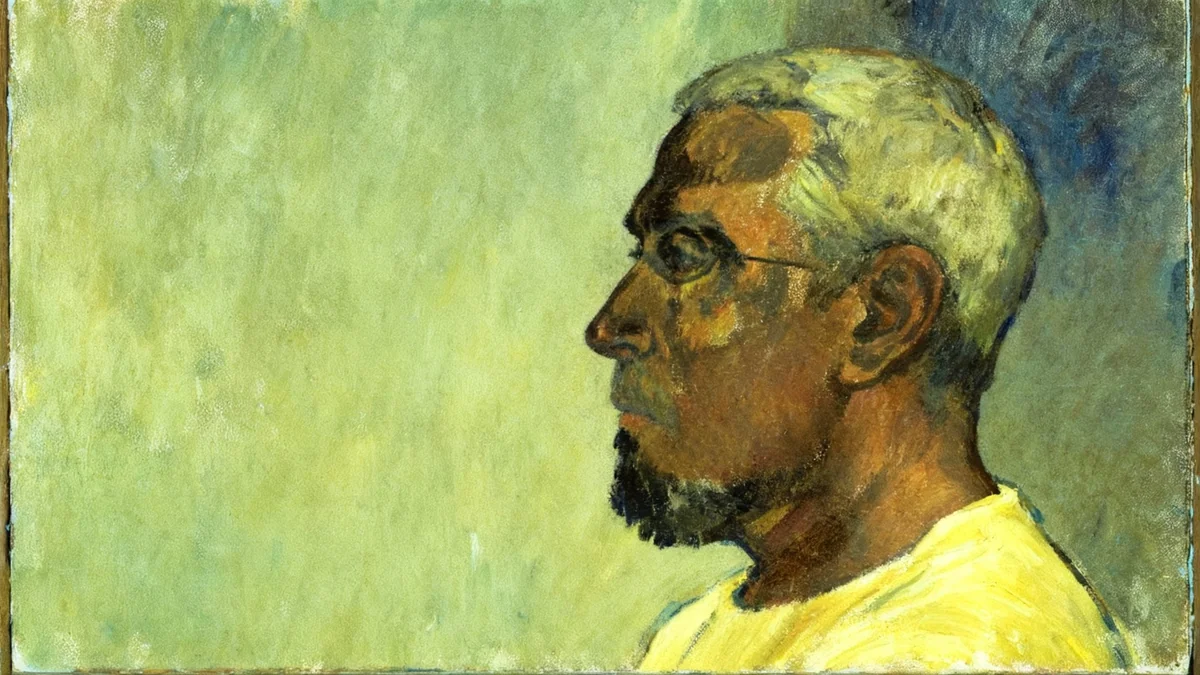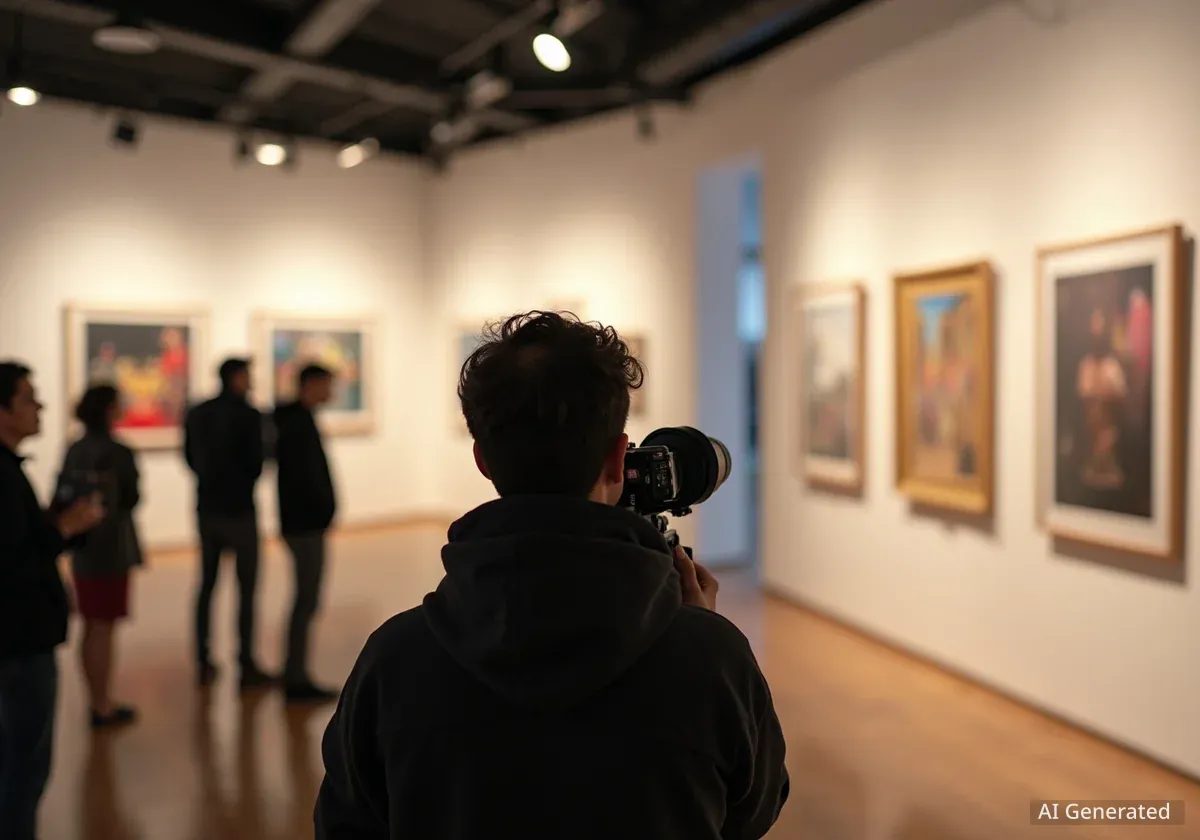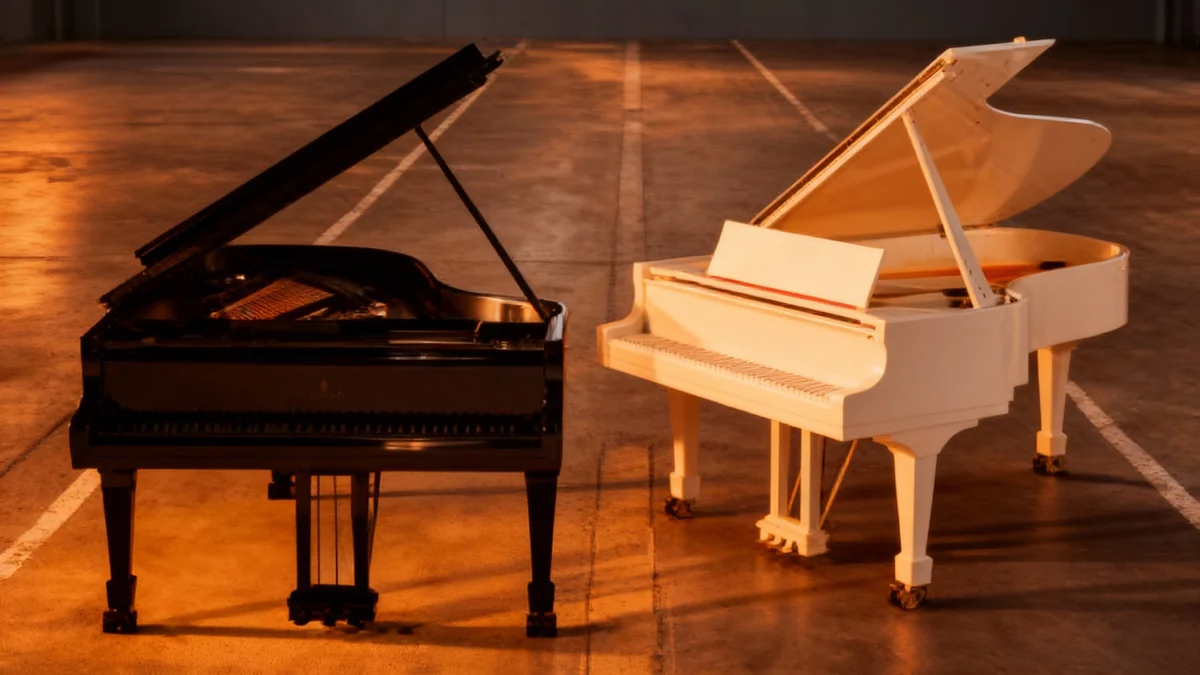A long-standing dispute over the authenticity of Paul Gauguin’s final self-portrait has concluded with the Kunstmuseum Basel affirming the work as genuine. However, a detailed investigation reveals that parts of the artist’s face were retouched years after his death, adding a new layer to the artwork's complex history.
Key Takeaways
- Kunstmuseum Basel confirms Paul Gauguin's last self-portrait is authentic.
- Technical analysis found post-mortem retouching on the artist's face.
- Titanium white pigment, unavailable until 1918, was used in the retouching.
- The Wildenstein Plattner Institute also confirmed the attribution.
- The retouches, part of the painting's history, will not be removed.
Investigation Confirms Gauguin's Authorship
The Kunstmuseum Basel launched an extensive investigation into the self-portrait following claims in May from Gauguin researcher Fabrice Fourmanoir. Fourmanoir had alleged that the painting was a forgery, created in 1916, 13 years after Gauguin's death. He suggested that Nguyen Van Cam, a Vietnamese friend of the artist, was the painter.
The museum's statement firmly rejects the forgery claim. It states that the attribution of the self-portrait to Gauguin "remains valid." This conclusion comes after a thorough technical analysis of the artwork.
Painting's Provenance
- 1903: Gauguin gives the painting to his friend Ky Dong.
- 1905: Ky Dong gifts it to Louis Grélet.
- 1924: Grélet attempts to sell it at Sotheby's, but it fails to find a buyer.
- Post-1924: Louis Francis Ormond acquires the painting.
- 1928: Basel pediatrician Karl Hoffmann purchases the artwork.
- 1945: Hoffmann bequeaths the painting to the Kunstmuseum Basel.
Post-Mortem Retouching Discovered
While confirming authenticity, the museum's technical analysis revealed a significant detail: certain areas of the face were "retouched" after Gauguin's death. These alterations are visible under ultraviolet light and affect key facial features.
The retouched areas include the forehead, eyes, nose, chin beard, and throat. This discovery sheds new light on the painting's journey and its visual presentation over time.
"Our technical analysis revealed that certain areas of the face were… retouched after the artist's death," the Kunstmuseum Basel stated in its official findings.
Dating the Alterations
Conservators found titanium white pigment in the overpainted sections, notably above the left eye. This specific pigment became commercially available only after 1918, providing a clear timeline for the retouching. This means the alterations occurred at least 15 years after Gauguin's death in 1903.
Further evidence suggests the retouching was completed by 1926. A photograph from that year shows the painting with the alterations already present. Experts believe the work was likely done around the time of the 1924 Sotheby's auction, possibly to enhance its appeal for sale.
Significance of the Self-Portrait
This self-portrait is crucial for understanding Gauguin's artistic legacy, especially his final years. It presents a more vulnerable and weakened image of the artist, contrasting sharply with the confident persona seen in his earlier self-portraits. The discovery of post-mortem alterations impacts how viewers interpret this important work.
Rejection of Forgery Claims
Fourmanoir's theory that Gauguin's Vietnamese friend, Nguyen Van Cam, painted the original work from a photograph was ultimately rejected by the museum. While the museum conceded it was "possibly [done] with the artist enlisting the help of Nguyen Van Cam" for some aspect, they concluded that "the evidence is inconclusive" regarding his direct involvement in the original painting.
The museum's final assessment is clear: "It is highly unlikely that the painting is a later forgery." They affirmed it is "more likely that it was produced by Gauguin."
Further validation came from the Wildenstein Plattner Institute, which maintains the official Gauguin catalogue raisonné. Specialists from the institute examined the painting on October 9th and confirmed the attribution to Gauguin.
Future of the Artwork
Despite the discovery of the retouches, there are currently no plans to remove them. The museum explains that some of Gauguin's original paint on the face has sustained damage. The additions, made between 1918 and 1926, are now considered an integral part of the picture's historical journey.
The self-portrait has been returned to the Kunstmuseum Basel's permanent collection display, where it can be viewed by the public with its newly understood history. This research offers a deeper appreciation for the artwork, acknowledging both Gauguin's original hand and the subsequent interventions that shaped its appearance over time.
Key Dates
- May: Fabrice Fourmanoir alleges forgery.
- 1918: Titanium white pigment becomes available.
- 1924: Sotheby's auction where painting failed to sell.
- 1926: Photograph shows retouches completed.
- October 9: Wildenstein Plattner Institute confirms attribution.




